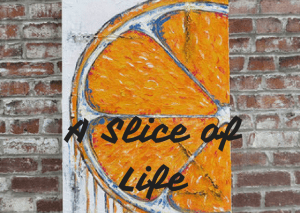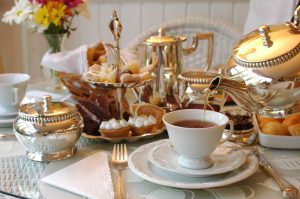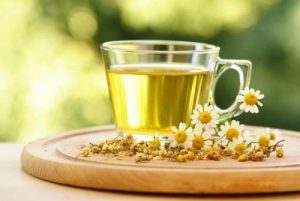Reading Time: 6 minutes
 Ruchira tells us the story of tea. She traces the antiquity of this wonder drink and how it spread to other parts of the world. Read more in the weekly column, exclusively for Different Truths.
Ruchira tells us the story of tea. She traces the antiquity of this wonder drink and how it spread to other parts of the world. Read more in the weekly column, exclusively for Different Truths.
“Thank God for tea! What would the world do without tea! How did it exist? I am glad I was not born before tea,” noted British author Sydney Smith had once remarked. Thousands of human beings will agree with him. The global civilised society has been drinking this wonder liquid for nearly four centuries. However, the history of tea is far more ancient. Let us take a look.
Origin in China
Like its nearest and perpetual rival coffee, tea too was discovered in Asia. It is believed that way back in 2737 BC, the Chinese emperor Shen Nung was one day seated beneath a tree, while his domestic help was boiling a pot of drinking water when some leaves from the tree fell into the water. The curious monarch decided to try the concoction that his servant had accidentally created. The tree was a Camellia sinensis, and the resulting drink was what we now call tea. Even otherwise containers for tea were discovered in tombs pertaining to the Han dynasty (206 BC – 220 AD). Eventually, during the regime of the Tang dynasty (618-906 AD), tea was established as China’s national drink. It grew so popular that in the later part of the 8th century, a writer called Lu Yu wrote an entire volume on tea, captioned the Ch’a Ching (tea classic).
Tea in Japan
Sometime later, tea was first introduced to Japan, by Japanese Buddhist monks, who had travelled to China to study the scriptures. Thence, Tea became an inseparable part of Japanese culture; this fact is amply visible in the evolution of the elaborate “Tea Ceremony” which is still a regular feature of Japanese lifestyle.
Tea in Europe
The Europeans had their first brush with tea only in the latter half of the 16th century. This was via the  Portuguese traders and missionaries who had footholds in Asian countries. However commercial import of tea began with the Dutch who began encroaching Portuguese trading routes in the East. By the 17th century, they set up a trading post in Java, Indonesia. From Java, the first consignment of tea was shipped from to Holland in 1606. Soon it became quite a rage in Dutch high society. From Holland, tea went to adjoining countries on the continent. However, as its price was phenomenal, it remained out of bounds for average Europeans.
Portuguese traders and missionaries who had footholds in Asian countries. However commercial import of tea began with the Dutch who began encroaching Portuguese trading routes in the East. By the 17th century, they set up a trading post in Java, Indonesia. From Java, the first consignment of tea was shipped from to Holland in 1606. Soon it became quite a rage in Dutch high society. From Holland, tea went to adjoining countries on the continent. However, as its price was phenomenal, it remained out of bounds for average Europeans.
Tea in Britain
In Britain, the first dated reference to tea was in an ad in a London daily in September 1658. It announced that ‘China Drink, called by the Chinese, Tcha, by other Nations Tay alias Tee’ was on sale at a coffee house in Sweeting’s Rents in the City. However, it was a royal wedding which proved to be a turning point in the history of tea in Britain. England’s Charles II wedded Catherine De Braganza a Portuguese princess, and a hardcore tea lover. Her love for tea led to its becoming a fashionable beverage first at court, and then among the affluent classes of Britain. Capitalizing on this, the East India Company began to import tea into Britain, 1664 onwards. The British nation took to tea with great enthusiasm that remains unflagging till the present day. Tea drinking remained a monopoly of middle- and upper-class men; women drank tea in their own homes. The man-on-the-street had no access to it since the prices were prohibitive. The high price was due to taxation. Between 1689 and 16932 taxes proved excruciating in spite of occasional fluctuations.
The taxation brought in its trail dual evils – smuggling and adulteration. Through the 18th century, commoners wanted to drink tea but the prices were astronomical. So they looked to smugglers for support. Consequently, tea smuggling developed into an organised crime network. Adulteration of tea also became rampant. Leaves from other plants, or leaves which had already been dried after brewing, were added to tea leaves. Sometimes if the colour of the tea leaves looked dull, sheep’s dung and poisonous copper carbonate were added to lend it a natural colour. To curb this menace, in 1784 the Prime Minister, William Pitt the Younger, slashed the tax from 119 per cent to 12.5 per cent. Forthwith tea became available legally available aplenty and smuggling stopped overnight.
Boston Tea Party
During the 1770s, the British were still in charge of the American colonies. The colonists loved tea, but they had to buy it from England. The British government which was nearly broke from fighting wars decided to raise funds by increasing the price of tea. The colonists were infuriated. To counter this, several leaders and social rights activists including Samuel Adams secretly purchased tea from other countries, which was illegal. Learning of this, the British government pushed the prices of the tea back to normal. However a few months later it hiked the prices again. Samuel Adams and members of his group called Sons of Liberty along with 5000 members of a similar group known as Patriots determined to revolt against the British atrocities. On 16th December 1773, the protesters gathered at the Boston Harbour where three ships laden with tea, were docked. That night, dressed up as Mohawk Indians, they climbed aboard the ships and tossed 340 chests of tea into the harbour waters. This unprecedented act of defiance went down in history as the Boston Tea Party. When the news of this incident reached England, an outraged British government shut down Boston Harbour until all of the 340 chests of tea was paid for. As is well known this paved the way for the American Revolution.
had to buy it from England. The British government which was nearly broke from fighting wars decided to raise funds by increasing the price of tea. The colonists were infuriated. To counter this, several leaders and social rights activists including Samuel Adams secretly purchased tea from other countries, which was illegal. Learning of this, the British government pushed the prices of the tea back to normal. However a few months later it hiked the prices again. Samuel Adams and members of his group called Sons of Liberty along with 5000 members of a similar group known as Patriots determined to revolt against the British atrocities. On 16th December 1773, the protesters gathered at the Boston Harbour where three ships laden with tea, were docked. That night, dressed up as Mohawk Indians, they climbed aboard the ships and tossed 340 chests of tea into the harbour waters. This unprecedented act of defiance went down in history as the Boston Tea Party. When the news of this incident reached England, an outraged British government shut down Boston Harbour until all of the 340 chests of tea was paid for. As is well known this paved the way for the American Revolution.
Tea in India
China had been the major supplier of tea for Britain. However, after the East India Company’s monopoly on trade with China ended in 1834, it began exploring other sources. This led to the cultivation of tea in India where the Company was already active. Cultivation first began in Assam, and by 1839 there was sufficient cultivation ‘marketable quality’ tea for the first auction of Assam tea in Britain. In 1858, power passed into the hands the British government from that of the East India Company; but the tempo of tea cultivation and processing was maintained. Gradually tea cultivation spread to Darjeeling (North Bengal) and the Nilgiris in South India.
The Immense Variety
In modern times tea has undergone manifold changes and innovations and modifications. It has emerged  as a highly popular global beverage, constantly vying for the top and second notches with coffee. Depending on the process which the leaves undergo after being plucked, you have Green a Black tea, Oolong, et al. Globally renowned brands of tea include Twinnings, Tazo, Dilmah Lipton, Tetley, Bigelow and many more. My personal favourite is Lipton’s Green Label. Its flavour is subtle but amazing!
as a highly popular global beverage, constantly vying for the top and second notches with coffee. Depending on the process which the leaves undergo after being plucked, you have Green a Black tea, Oolong, et al. Globally renowned brands of tea include Twinnings, Tazo, Dilmah Lipton, Tetley, Bigelow and many more. My personal favourite is Lipton’s Green Label. Its flavour is subtle but amazing!
There are lots you could do, in terms of flavour: boil the leaves in water and you have black tea, drunk minus milk or sugar. Add dried chamomile flowers in the brew to get rid of digestive ailments; dried ginger roots and drops of lemon juice in tea boosts your immunity system, banishes flu symptoms and leaves you rejuvenated. A popular desi avatar of tea is the masala chai where an entire array of aromatic spices is added to the brew.
Tea addicts may find it irksome, but I can’t help mentioning how the average Indian chai lovers follow an erroneous method of tea-making. Often I watch with horror, how the maker throws heaped spoonfuls of sugar straight into the boiling water, followed by tea leaves. So far as tea goes, I am a pukka sahib; always serve milk and tea separately along with the steaming brew so that my guests can make their own permutations and combinations. This is just in passing I am sure each one of us has the right to enjoy his cuppa tea in a way that suits him best. So go ahead and enjoy!
©Ruchira Adhikari Ghosh
Photos from the Internet
#TeaStory #HistoryOfStory #ChamomileFlower #TeaChina #Chai #TeaMaking #GingerRootTea #EuropeTea #TeaIndia #TeaInEurope #BostonTeaParty #SliceOfLife #DifferentTruths















